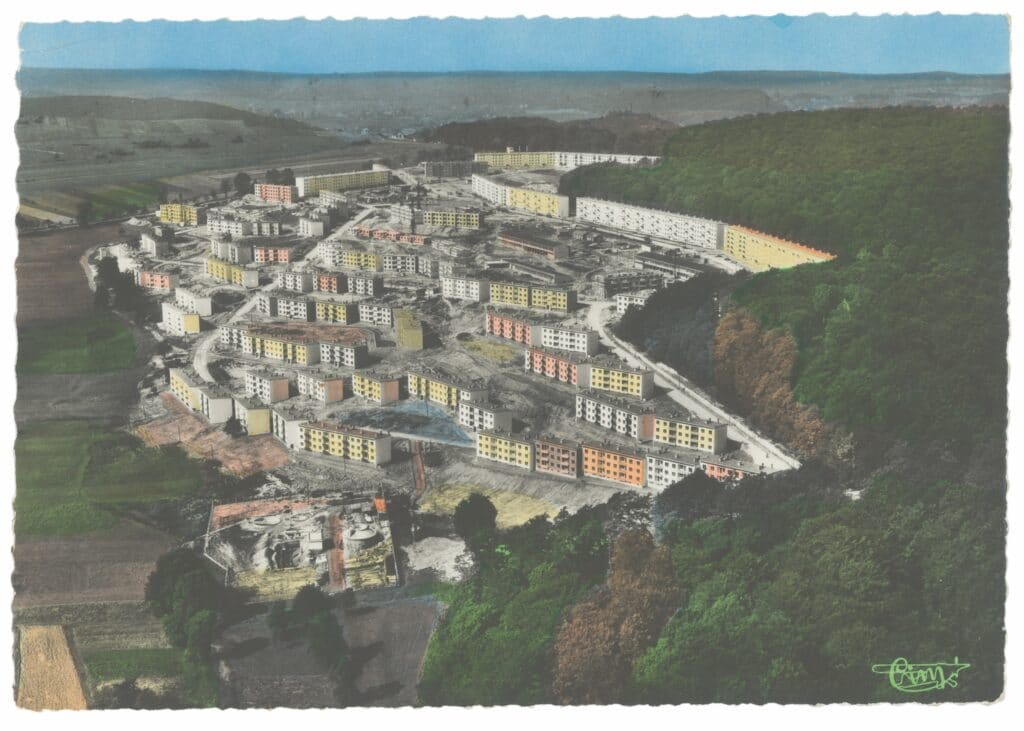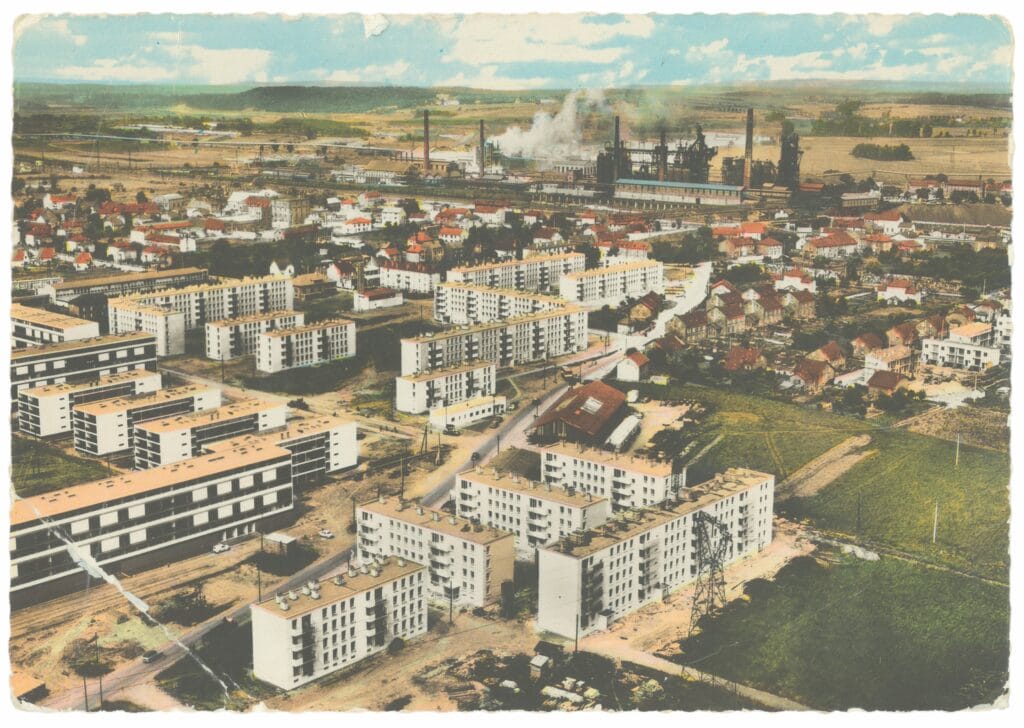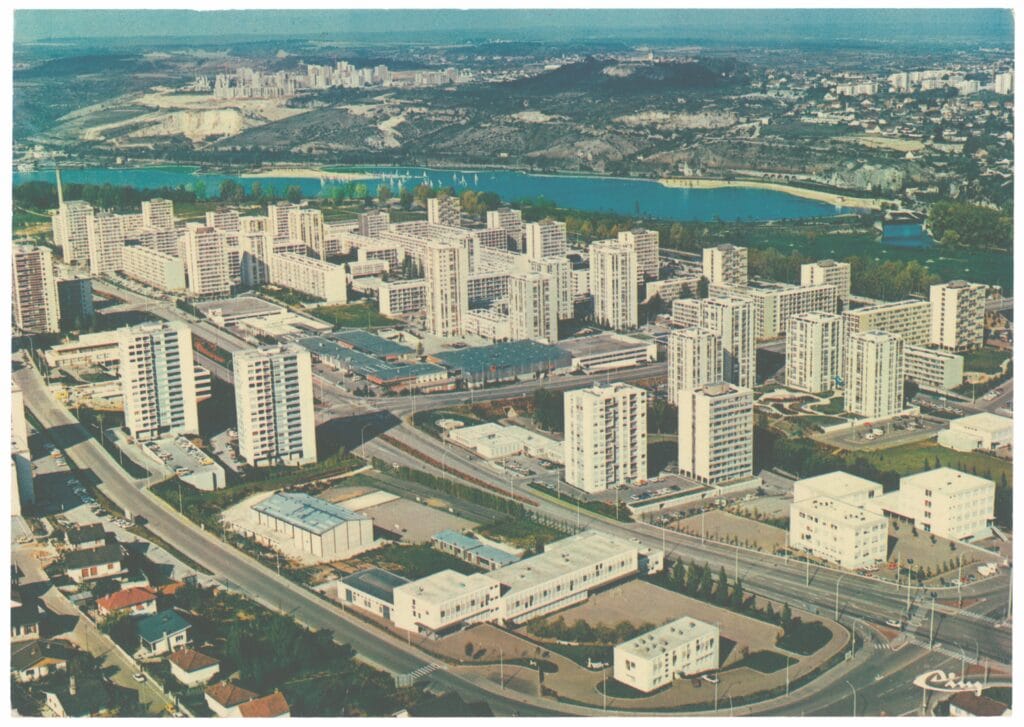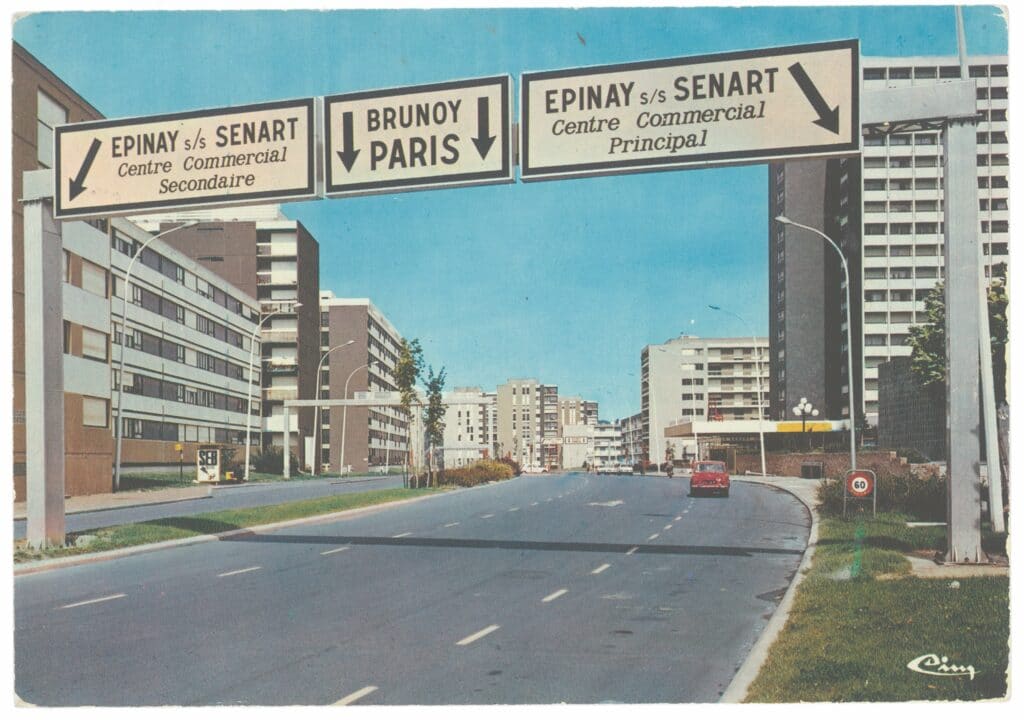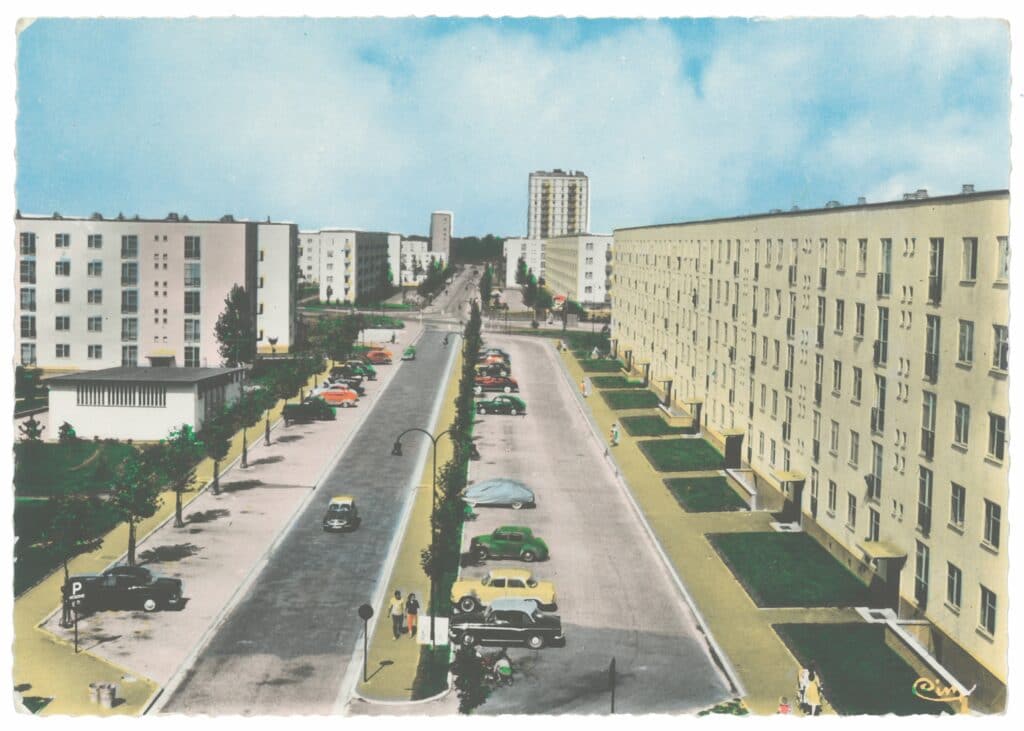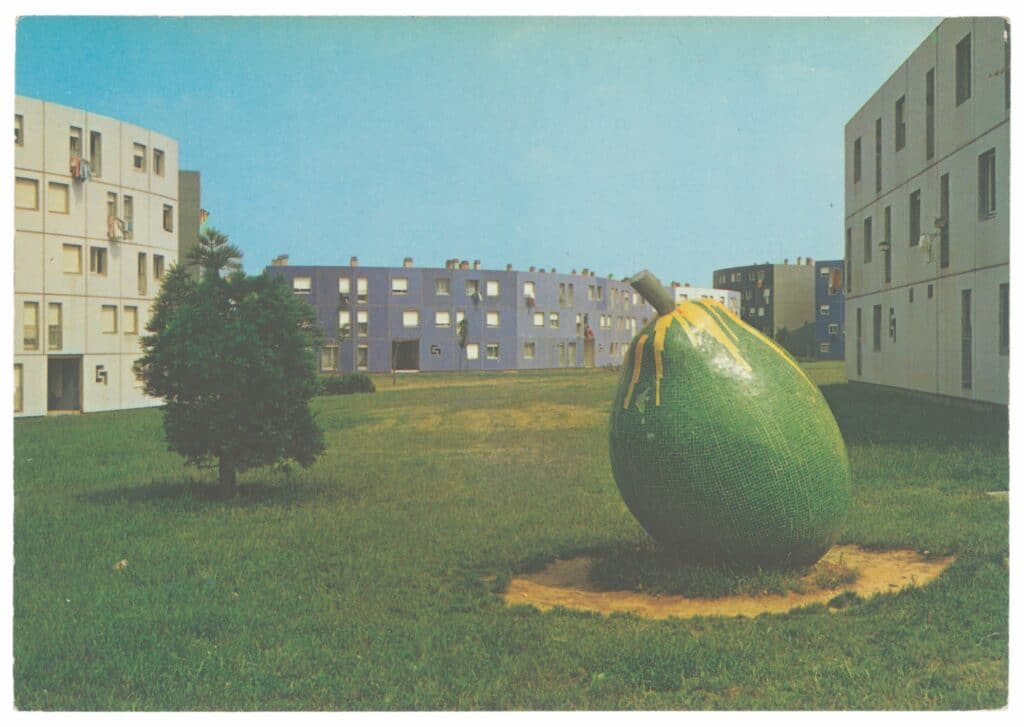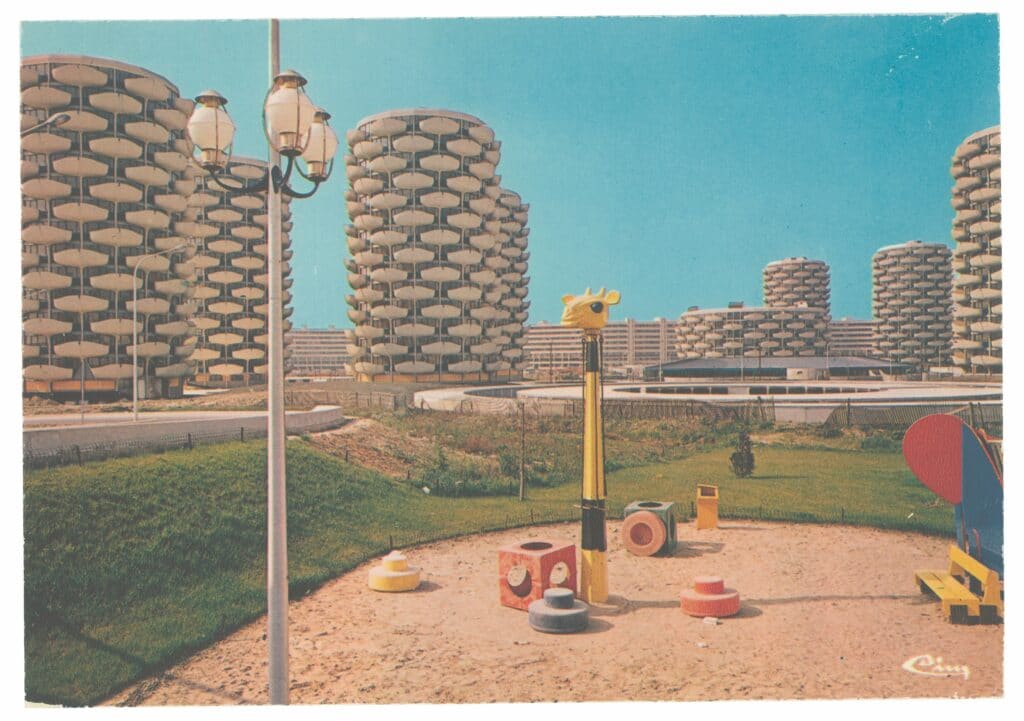
It was in 1994, at a bar-tobacco shop in the ZUP (Zone à Urbaniser en Priorité, Priority Urbanization Zone) des Trois Ponts in Roubaix, that sociologist Renaud Epstein first came across a postcard of a large housing project “lost among faded greeting cards in a half-empty display rack.” His research on urban policy took him around France to low-income housing projects, “from Sarcelles to Vaulx-en-Velin, from Mulhouse to Nantes, to Vierzon, Beauvais, Clichy-sous-Bois, Tours, and dozens of other cities.” In every neighborhood, he went around to cafes, newsstands, grocery stores, and over the years collected hundreds of postcards—a collection he compared to that of “a tourist bringing back souvenirs from his vacation spots.”
This personal collection took a new turn in 2003 when the French government launched a vast nationwide program of demolition-reconstruction of social housing projects. From simple souvenir photos, these postcards became archives, traces of a vanishing world. Renaud Epstein started collecting them more systematically, trying — “unsuccessfully” — to cover all the neighborhoods targeted by the demolition-reconstruction operation. “So I started scouring flea markets and garage sales, then internet auctions, and ended up accumulating nearly three thousands of these postcards representing popular neighborhoods and public housing structures slated to disappear.”
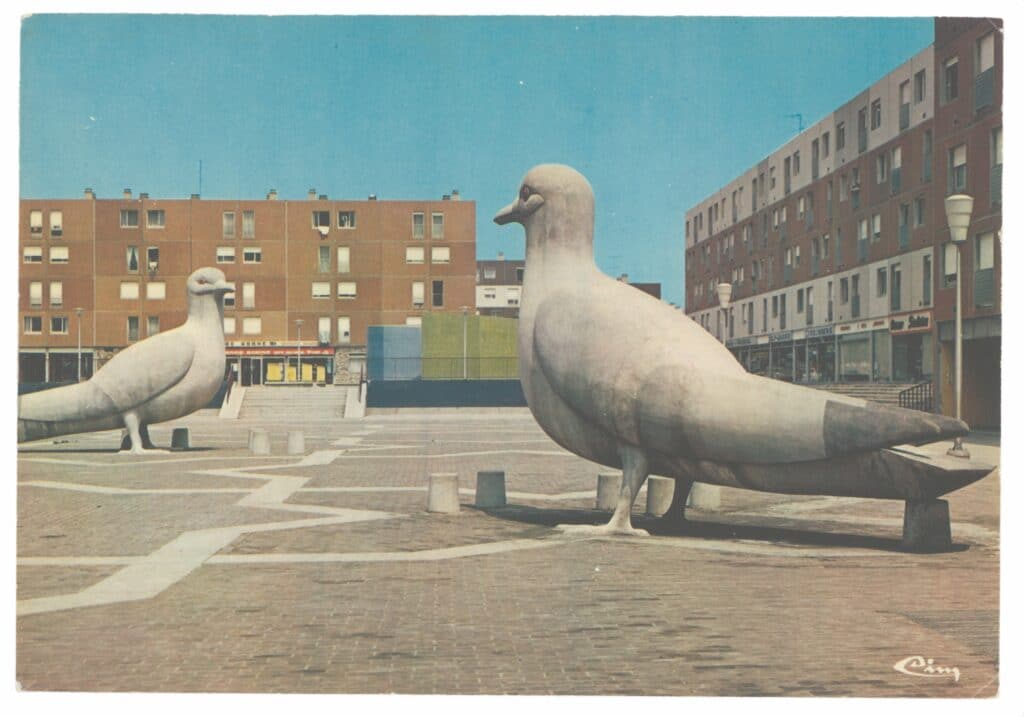
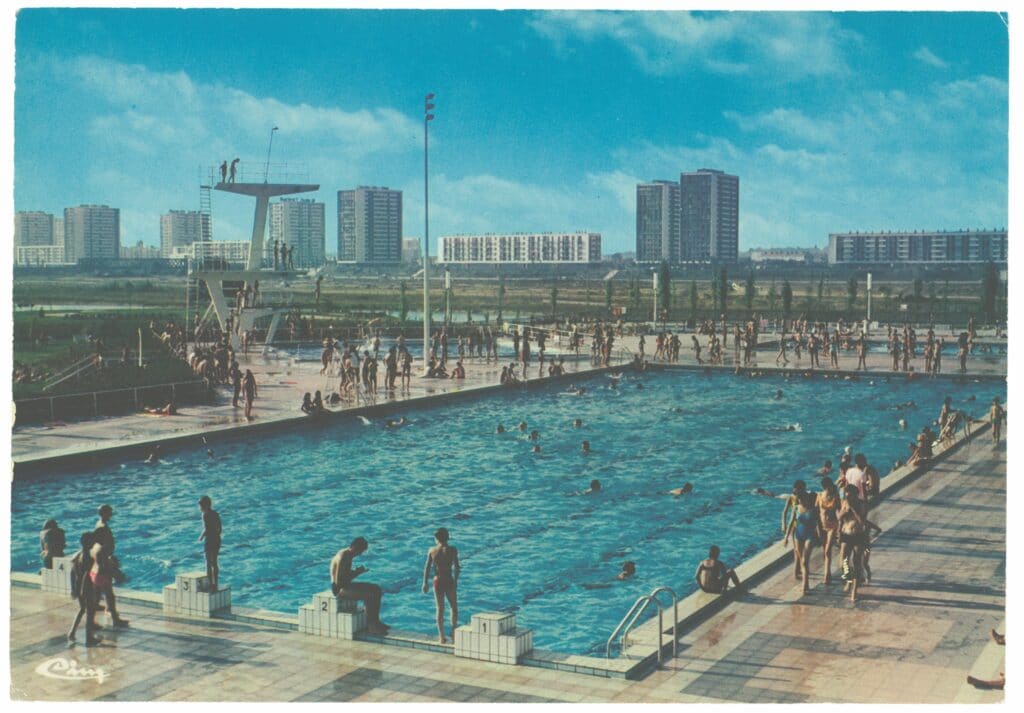
These postcards appeared to promote the neighborhoods, starting with the earliest ones, like the high-rise district of Villeurbanne or the garden city of Drancy, “emblematic projects of interwar municipal socialism which opened the way to the construction of large residential complexes in the 1950s.” After World War II, France suffered a housing shortage. Hundreds of thousands of families subsisted in insalubrious slums. This spurred Abbé Pierre to launch his famous appeal on February 1, 1954, known as “the uprising of kindness,” which began as follows: “My friends, come help … A woman froze to death tonight at 3:00 AM, on the pavement of Sébastopol Boulevard, clutching the eviction notice which the day before had made her homeless… Each night, more than two thousand endure the cold, without food, without bread, more than one almost naked. To face this horror, emergency lodgings are not enough.”
In 1953, the State set itself an ambitious goal: building 240,000 housing units per year. Between 1946 and 1975, France went from 12 million homes to 21 million. Over 200 “priority urbanization zones” were constructed throughout the country. At the same time, “thousands of photographs of housing projects were taken and put on sale by major national publishers (Yvon, Lapie, Combier, Cap, La Cigogne…) and by a multitude of regional and local publishers who used a wide range of techniques, angles, and printing.” Often taken from above, the photos of these sites tend to feature dreamy blue skies. They were taken by adopting the visual codes of institutional photography “intended to showcase the architecture as a symbol of modernity and progress.” The housing projects were surrounded by luxuriant green spaces. This was a far cry from the present-day images of low-income housing complexes, which, years after their construction, had come to symbolize the “socio-urban crisis” which led to what is more commonly known as the crisis of the banlieues.
Faced with the bitter realization of the failure of these neighborhoods, long forsaken by the state, the decision was made to wipe the slate clean, raze them and build anew. The decision was met with criticisms, some denouncing “the allegedly preferential treatment afforded to residents of neighborhoods targeted by the city policy, the majority of whom are immigrants or descendants of immigrants, coupled with the state’s abandonment of the inhabitants of a vaguely defined ‘peripheral France’.” In response to this outcry, resonating in public debates in 2014, Renaud Epstein launched a series on Twitter: “One day, one ZUP, one postcard.” Wishing to “offer a fresh look at stigmatized neighborhoods,” the sociologist posted a postcard a day. His Twitter stream became very popular, inviting nostalgic, touching, but also spiteful comments.
In his wonderful book On est bien arrivés [We’ve finally made it], just published by Le Nouvel Attila, Renaud Epstein takes a tour of France’s major urban areas through a hundred postcards, accompanied by “quotes from political speeches, legal texts, scientific works, press articles, novels, films, songs, tweets and, occasionally, from the back of the postcards themselves.” One of these little texts cites the rapper Kery James who sings what we cannot see: “I come from the suburbs, a France apart. And there’s no distance between us. The city has its codes, its language, its silence, its modes, its methods, and its ways of the world. It’s true that among my people there are drug dealers, killers and robbers, and villains, but also tough guys with hearts of gold, students, bosses, and sportsmen, there are innocents and culprits. Our streets are full of hidden talent. Turned into wasted talent.”
Renaud Epstein, On est bien arrivés: Un tour de France des grands ensembles, Le Nouvel Attila, 144 pp., € 18.
